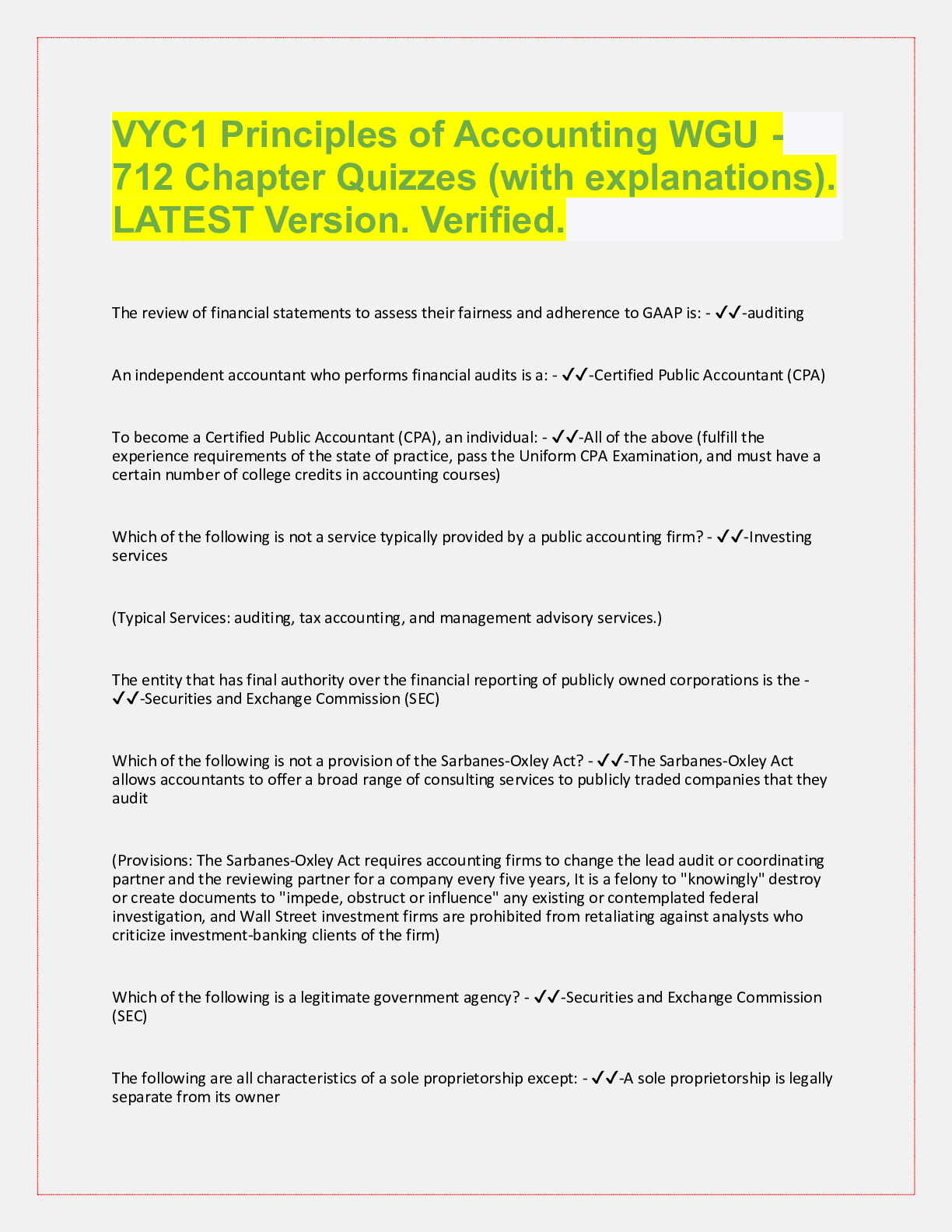Financial Accounting > QUESTIONS & ANSWERS > University Of Georgia ACCT 2102 Principles of Accounting II Exam 2; FOR Chapter 6: Cost Behavior, C (All)
University Of Georgia ACCT 2102 Principles of Accounting II Exam 2; FOR Chapter 6: Cost Behavior, Chapter 7: Cost-Volume-Profit Analysis (CVP), Chapter 8: Relevant Costs for Short-Term Decisions and Chapter 9: The Master Budget,
Document Content and Description Below
ACCT 2102 Exam 2 Chapter 6: Cost Behavior Slide 2: Cost Behavior . . .Planning and Decision Making 3 basic forms of cost behavior: Variable, Fixed, and Mixed . . . let’s look at a simple example ... to illustrate cost behavior. Fixed cost – cost changes per unit depending on the activity level - you pay $35 no matter what but the more times you go, the less it costs - ex: gym membership, you any the same every month no matter how many times you go - inverse relationship Variable Cost- In total it will fluxuate. There’s a direct relationship. It changes depending on how many times you do the activity Mixed – fixed and variable - monthly fee (just walking through the door) and a class fee (taking the class) - the more times you go the total cost will increased by the variable cost, the per visit cost decreases - changes on total and per unit bases understand how all three cost types behave in 2 different ways Per unit and total VC – DOES NOT change on per unit basis; DOES CHANGE in total FC – Changes per unit; does not change with total MC – changes per unit AND total Units Increases Cost behavior Formula = y=mx + b Goal is to devise some way to get this formula I’m planning a party for my parent’s wedding anniversary. The banquet hall will cost $400 to rent for the evening, and can hold up to 250 people. Dinner will cost $10 per guest in attendance. I want to estimate my costs under 2 scenarios: either 50 guests or 100 guests attend. • Identify the cost behavior for the following cost categories: • Venue Cost – fixed (total =$400; per person =change) • Food Cost- variable (total = change; per person-$10) • Venue + Food Cost = mixed If 50 guests attend, what are the total expected costs? (50 x 10)+ 400 = 900 If 100 guests attend, what are the total expected costs? (100 x 10)+ 400 = 1400 • What if I expect 300 people to come? (300x10) + 400 = 3400, it doesn’t work b/c the venue only holds up to 250 people. So therefore you need another venue• What if this was an event people had to pay to attend and I wanted to “break even” on the event? What would I need to charge per person? Take total cost/# of people. Say 100 people will come to this event? $1400/100 =$14per person, What is the risk? Some people might not show up • How would you decrease your cost? Cut your cost or get more people to come Slide 3: Let’s look at some conceptual aspects of cost behavior and a business example . . . Conceptual Question From this Slide Say a company’s total costs are $2,500,000 when 100,000 units are made. Of the total cost, $500,000 is fixed. Predict total costs when 120,000 units are made. • If volume increases, what happens to the variable cost per unit? • It stays the same, no change, pure variable cost DOES NOT change per unit • If volume decreases, what happens to the total variable cost? • Decreases • If volume increases, what happens to the fixed cost per unit? • Decreases • If volume decreases, what happens to the total fixed cost? • No change • What does “directly proportional” mean? Which cost behavior does it apply to? • Directly proportional = same direction at the same rate • Variable Cost • What does “inversely proportional” mean? Which cost behavior does it apply to? • Inversely = they’re moving in Different Direction • Fixed cost PER UNIT • Direct relationship between activity and variable cost • Inverse relationship between activity and fixed cost per unit • Which cost is neither directly or inversely proportional? • Mixed Cost • Write out a mixed cost equation. Define each term in the equation. • y = mx + b • y = dependent variable; total cost • m = slope; variable rate • x = independent variable; cost driver • b = y-intercept (what y is when x = 0); fixed cost • total costs = (variable rate) (cost driver) + fixed cost • a pure variable cost doesn’t have a fixed component • In a visual representation of a cost (graph), what does the slope of the cost line represent? What does the y-intercept represent? • Slope = Variable Rate • Y –intercept = Fixed Cost • What is meant by “relevant range” and why is it important? • Range over which over our cost behavior assumptions are valid • Won’t use relevant • When you get out in business and you estimate cost you need to understand that any formula you come up with there’s a relevant range attached to that formula and if your employer asks you to go outside of that range you need to document somewhere that you have gone outside that range • How do managers make predictions if the cost is non-linear? [Show More]
Last updated: 2 years ago
Preview 1 out of 34 pages
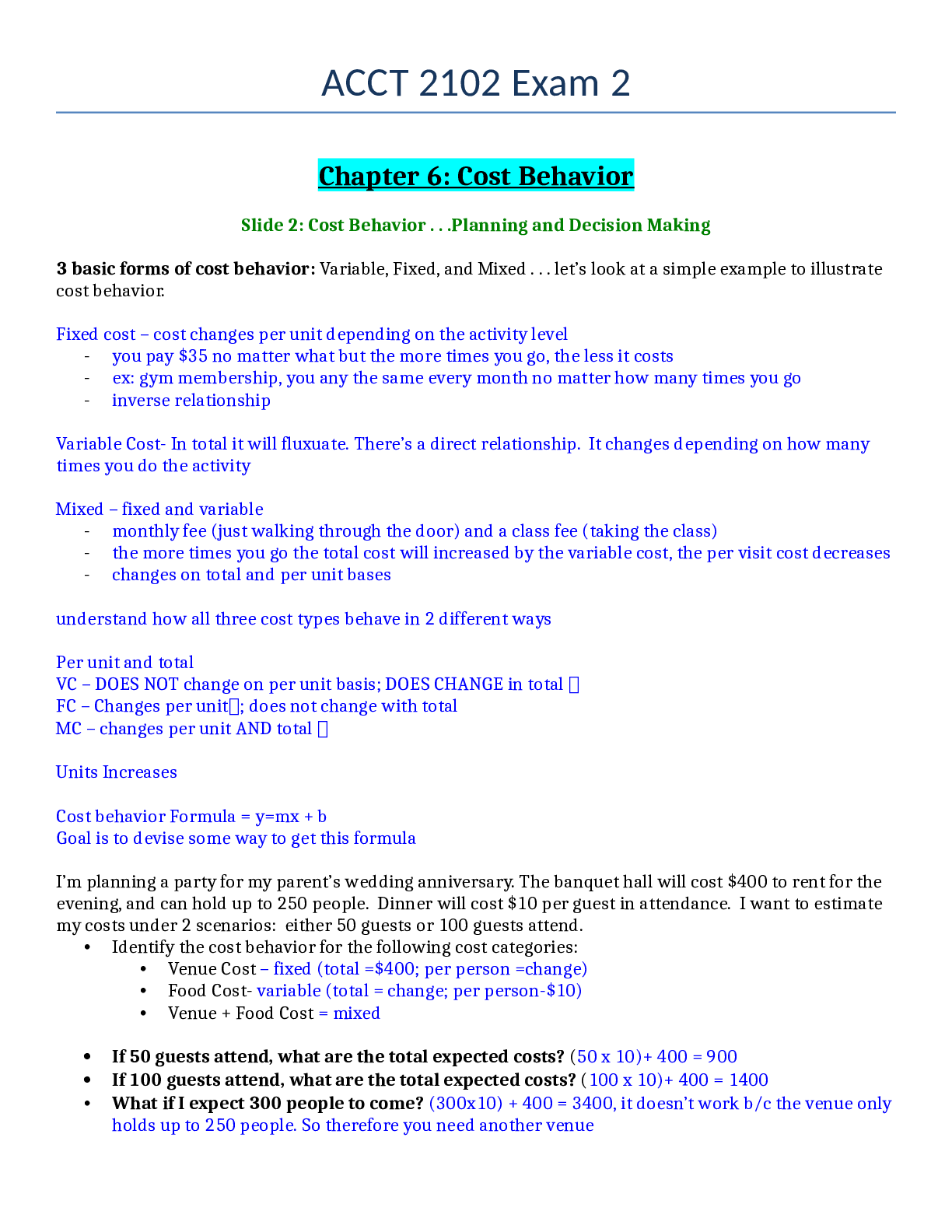
Buy this document to get the full access instantly
Instant Download Access after purchase
Buy NowInstant download
We Accept:

Reviews( 0 )
$10.50
Can't find what you want? Try our AI powered Search
Document information
Connected school, study & course
About the document
Uploaded On
Apr 02, 2023
Number of pages
34
Written in
Additional information
This document has been written for:
Uploaded
Apr 02, 2023
Downloads
0
Views
63

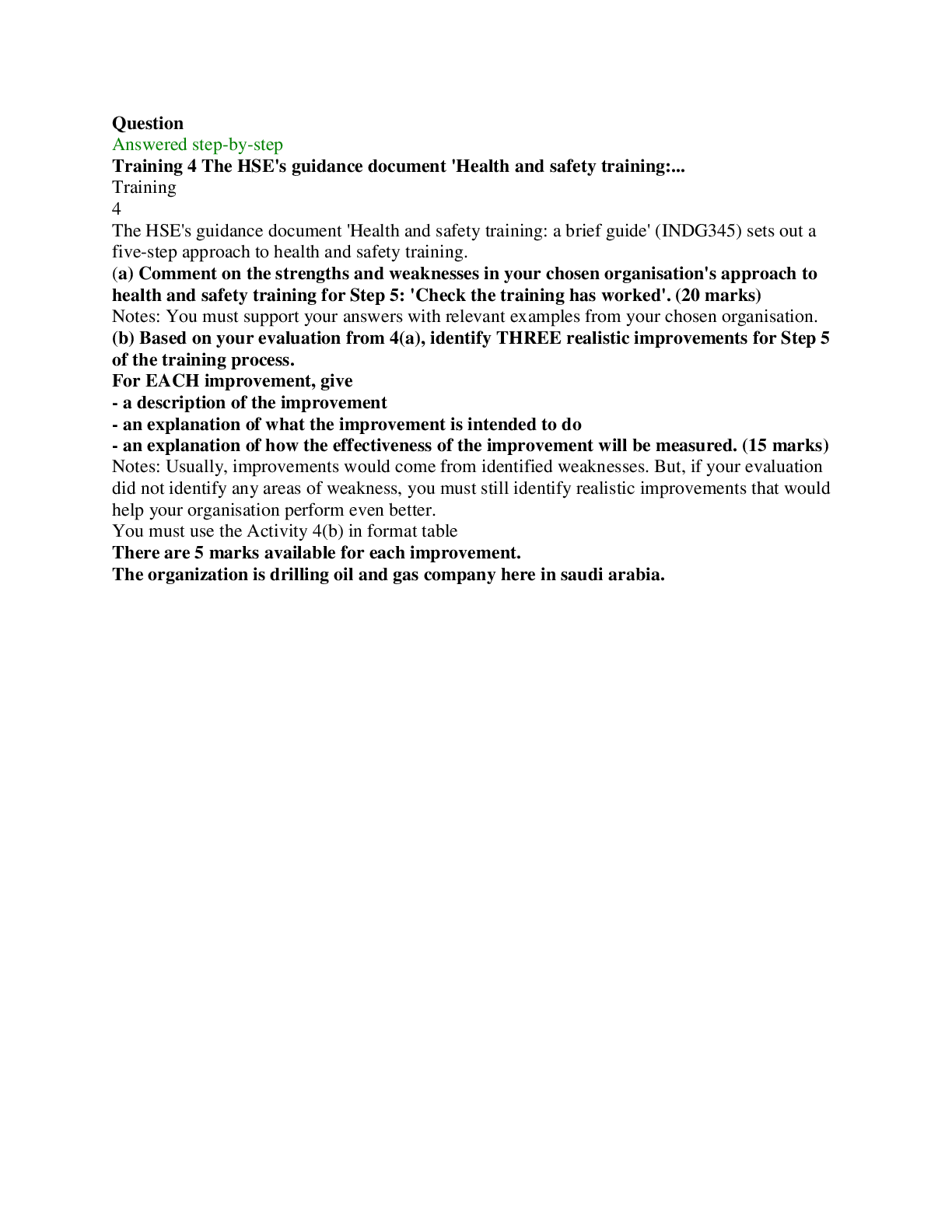
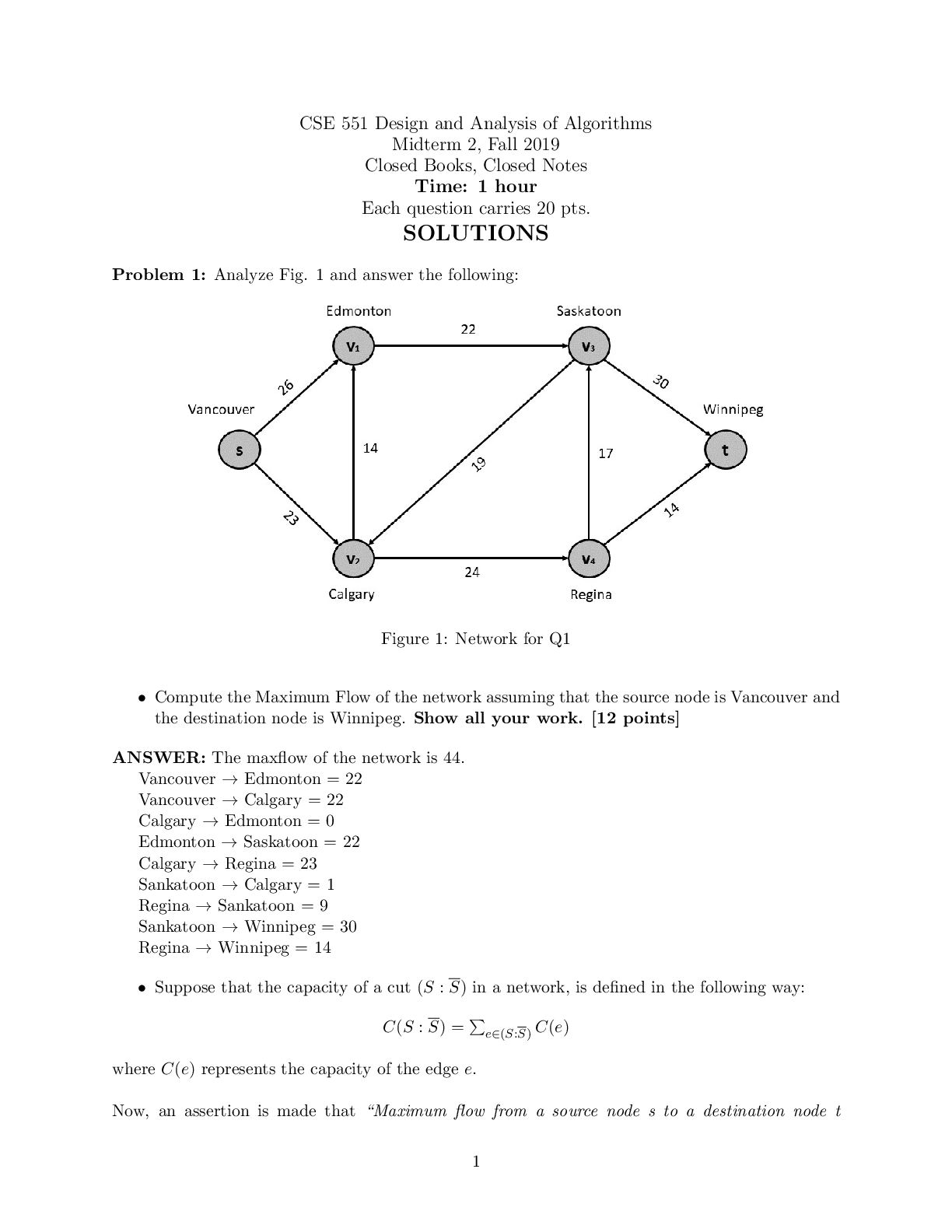

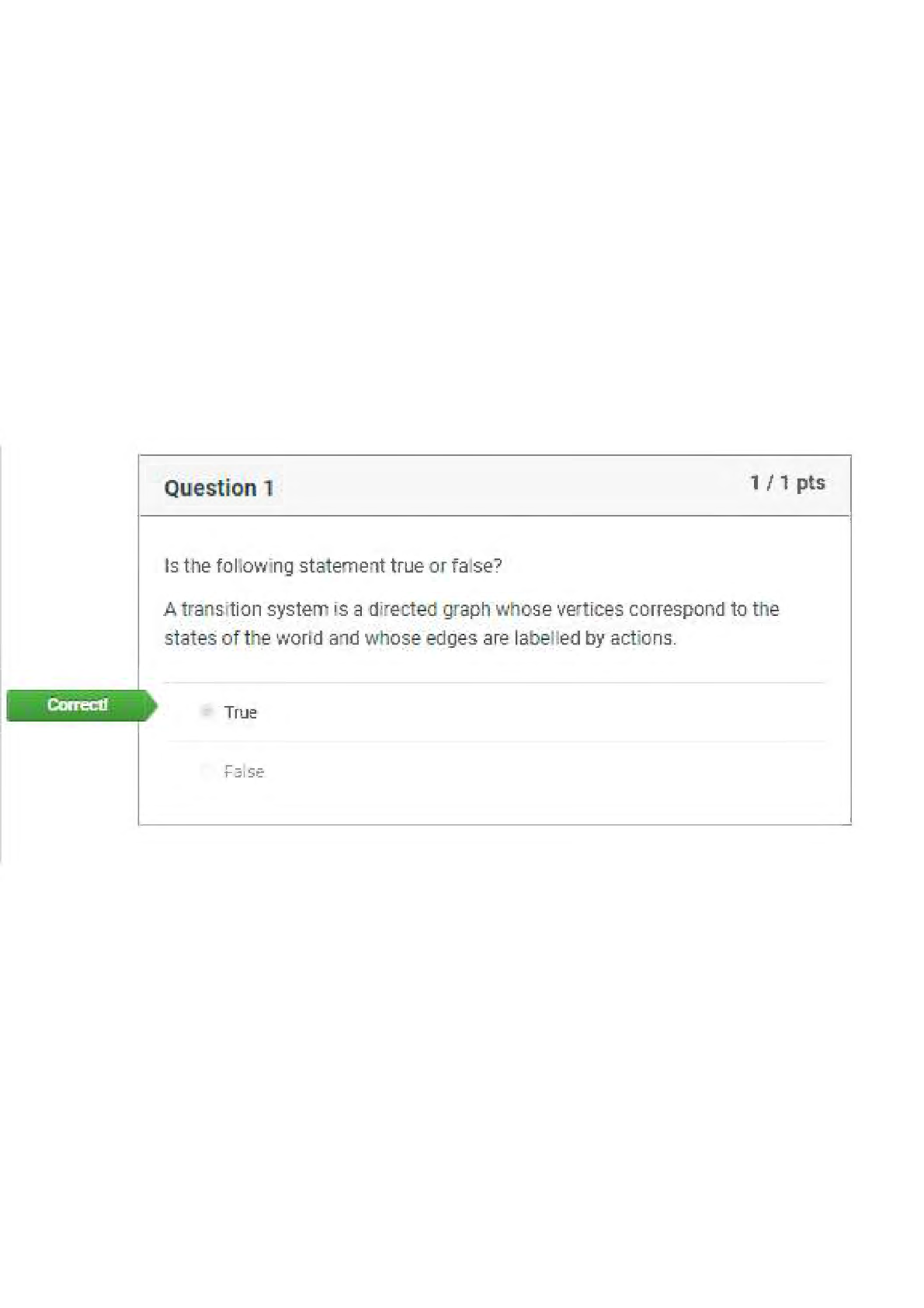
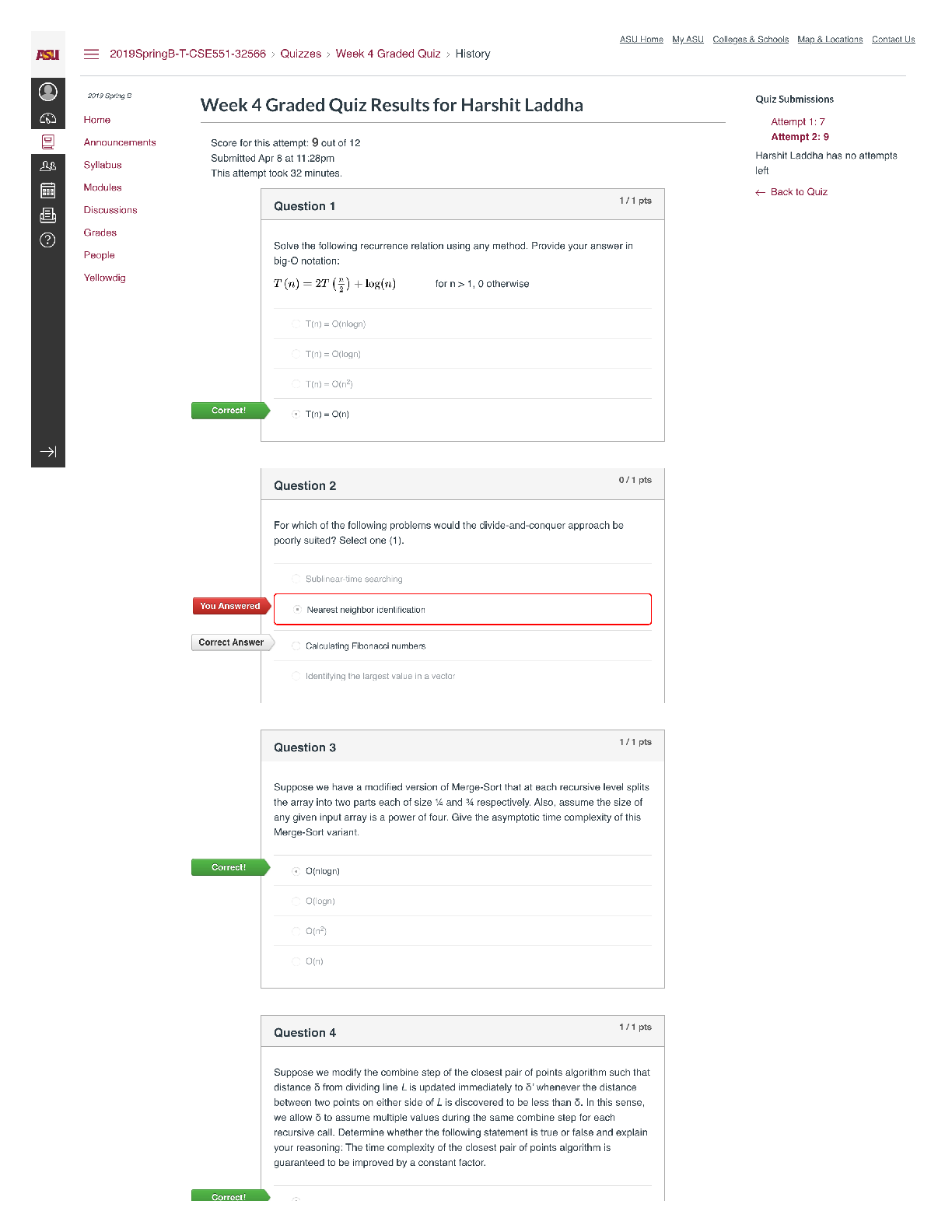

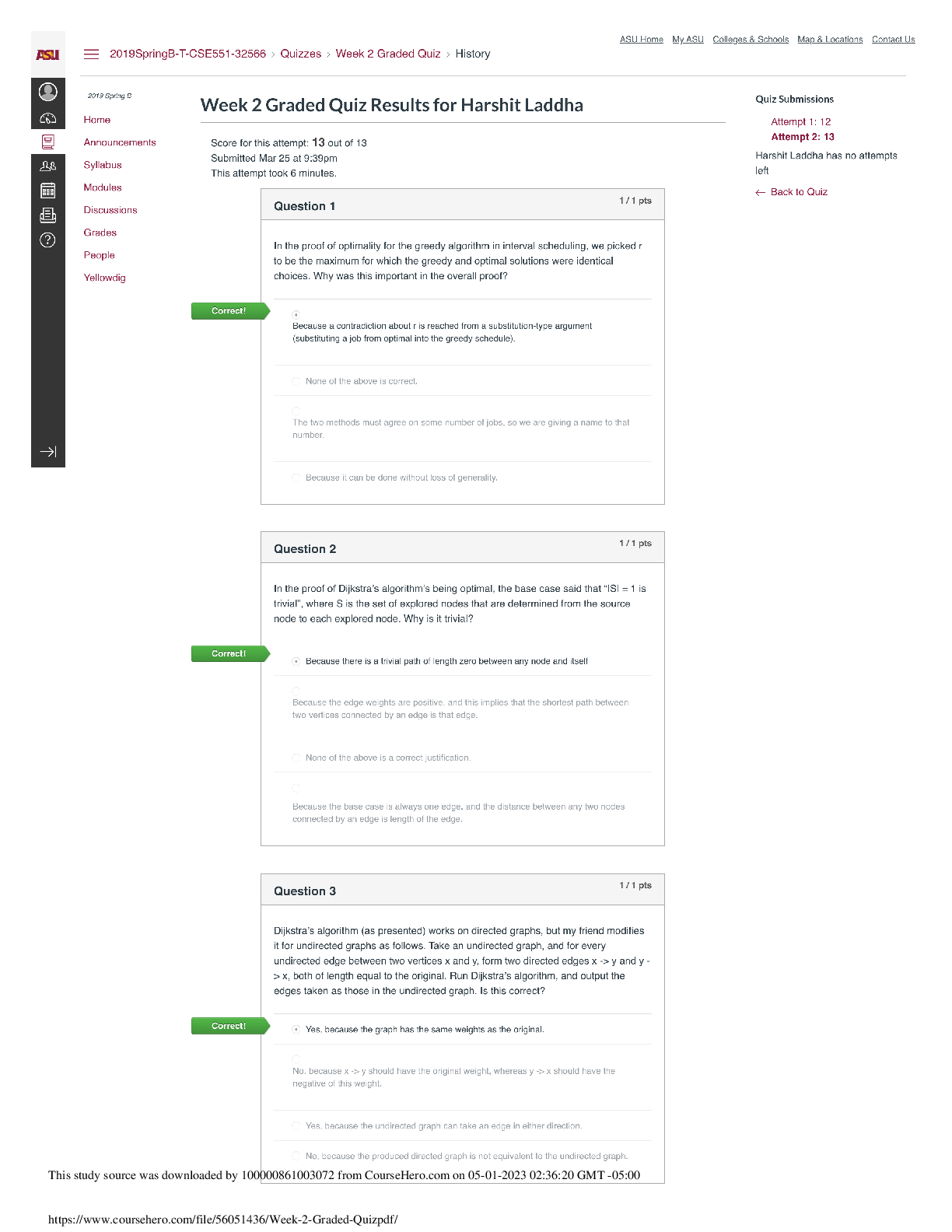

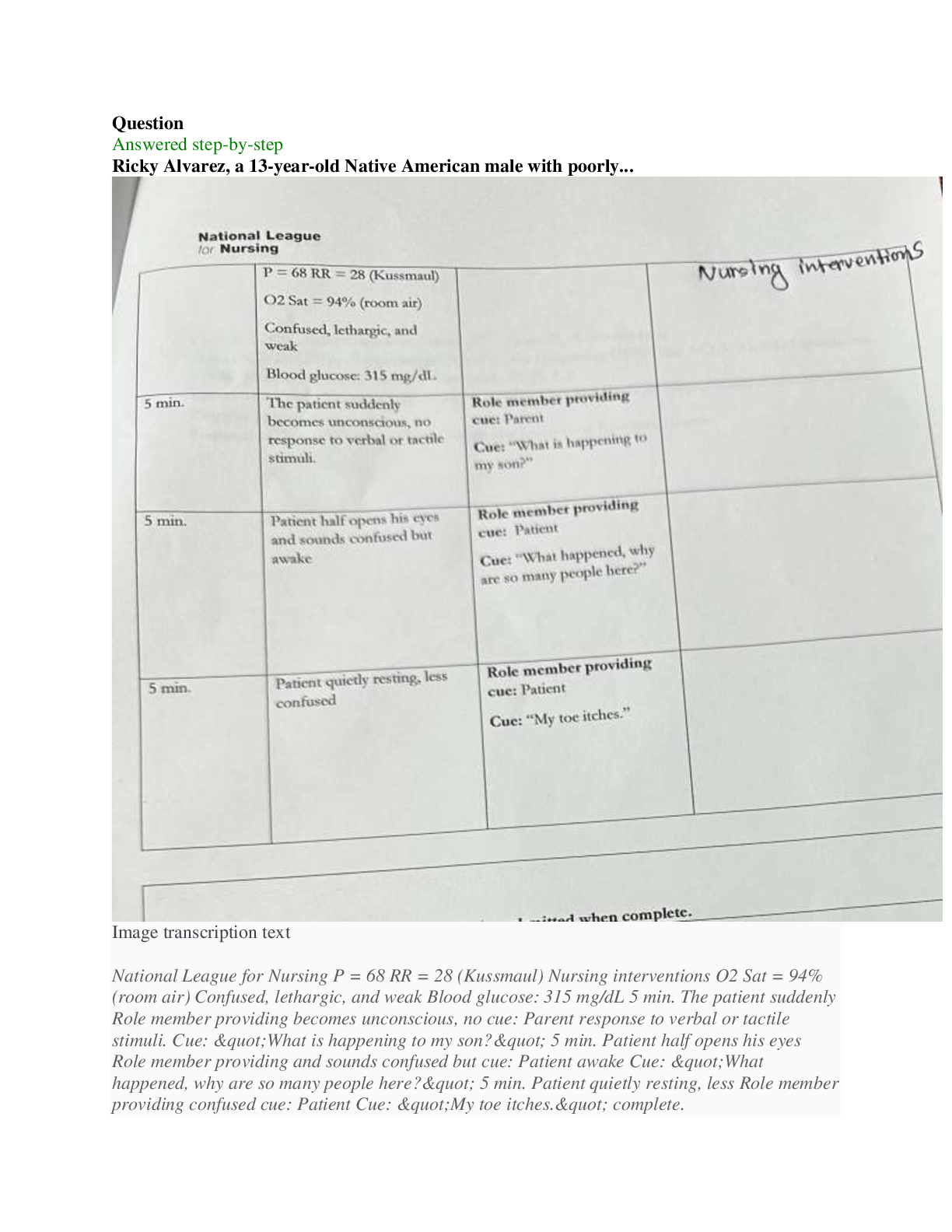


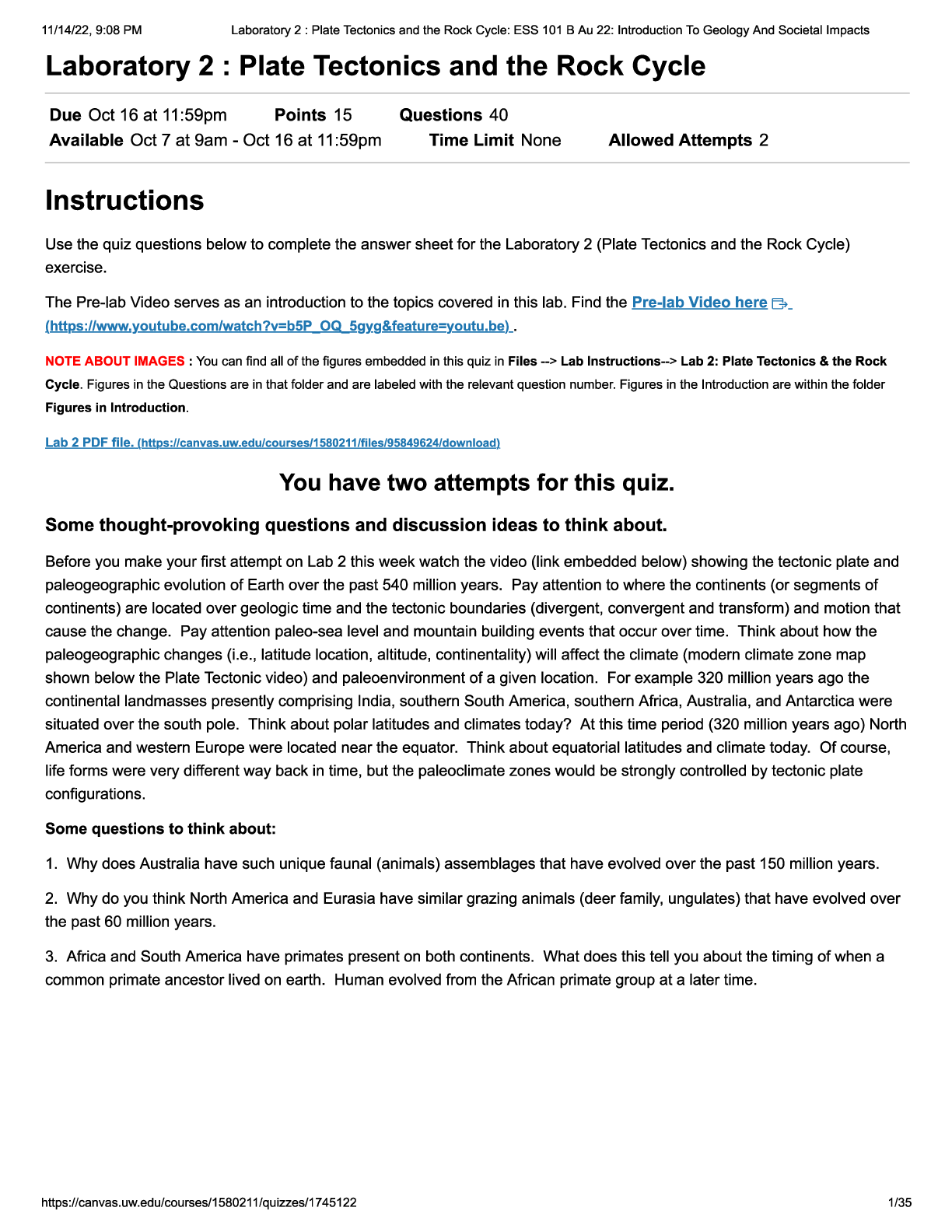
 (A Grade), Questions and Answers, All Correct Study Guide, Download to Score A.png)
 - Unit III.png)
